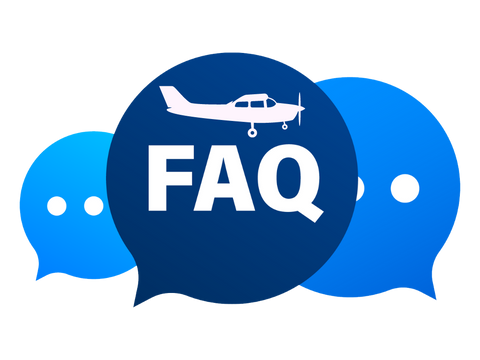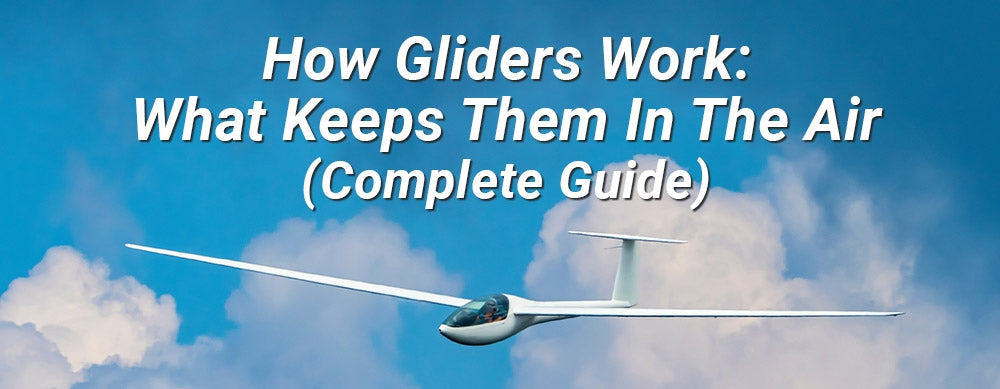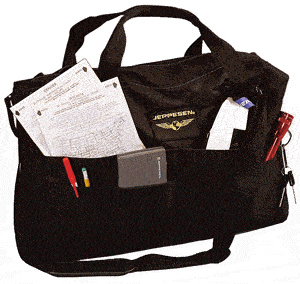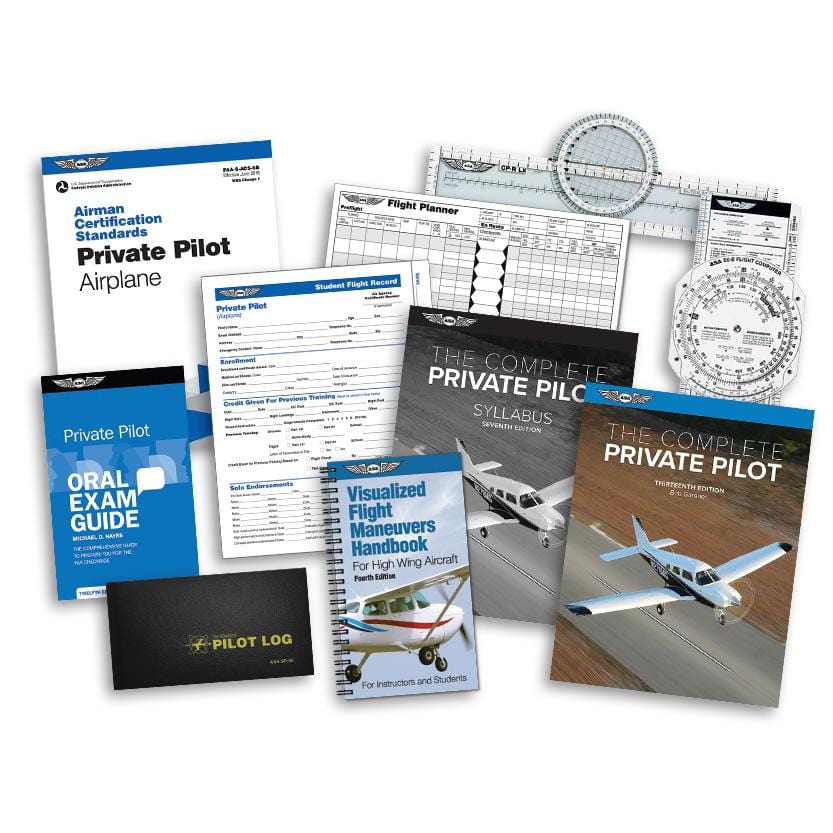The realm of aviation usually focuses on powerful engines and roaring propellers, but there is also a quieter, more graceful type of flight—gliding.
These aerial works of art require a perfect balance between the forces of nature and human engineering through using rising air. In this guide, we will explore how gliders stay in the air without help from an engine or jet fuel. We'll look into thermals, wave lift, and ridge lift to understand the many mechanics that keep gliders afloat.
Whether you're interested in becoming a glider pilot or simply curious about how it works, this article will answer the question of "How Do Gliders Work?".

(source: FAA Glider Handbook )
The Components of a Glider
Although a glider looks similar to a single-engine plane, there are some major differences. Gliders can have wingspans that range from 40 feet up to 101.38 feet. One side of the wing can be constructed of one piece attached to the fuselage or up to four pieces.

Three Types of Lift
When it comes to gliders there are three magical types of lift that make dreams of soaring amongst the clouds a reality.
First, there's the thermal lift, a glider pilot's warm embrace with the sun to ride on rising air.
Then, there's wave lift, a rhythmic dance with the wind as it creates invisible undulations, allowing light gliders and high-performance gliders alike to ride the waves skyward.
Finally, there's ridge lift, where a modern gliders wings kiss the wind-swept slopes of mountains, harnessing the upward air currents to extend their flight and embark on epic journeys of cross-country flying.
These three forms of lift are the secret spells that empower pilots to achieve astonishing glide ratios, defying the need for powered aircraft as they gracefully explore the boundless expanse of the heavens.
Let's break these three types down to understand them better.
Ridge Lift
Ridge lift (or slope lift) is what occurs when an obstruction—most often a mountain range or cliff—is large and abrupt enough to redirect the wind upwards.
If the wind blows strong enough it creates rising air against the obstruction. Ridge lift can keep gliders, hang gliders, paragliders, and birds aloft for extended lengths of time or help them traverse lengthy distances by 'Ridge soaring'.
Unpowered aircrafts are usually sinking through the air, yet they can climb if the air around them is rising faster than their descent rate.
It is also important to note that air near the ground is weaker.
Wave Lift
Wave lift occurs when the wind weaves around and through a glider's wings, creating wave lift. Picture the motion of gentle ocean swells, but in the sky. When the wind bumps into a mountain range, it rises up, creating invisible waves that allow the glider to soar higher and maneuver through the open air.
Just as a sailor can read water currents, pilots use their skills and knowledge to guide them through these billows of air. It is a collaboration between nature and man, an intense yet stunning experience that uses the energy of the wind to remain aloft in flight.
Thermal Lift
Glider pilots look to the sun(thermal activity) to help them fly by following the warm currents of air generated by thermal lift. As the Earth's surface absorbs sunlight, areas near the ground turn into pockets of hot air that become lighter and ascend, much like a hot air balloon.
By taking advantage of these rising columns of warmth, pilots can glide in grace through the sky, immersing themselves in nature's gentle beat and creating a peaceful and awe-inspiring flight experience.
How do Gliders Take Off Without an Engine?
There are a few ways that a glider can become airborne, these include:
-
Aerotow: Being towed into the air by an airplane utilizing a winch launch. This provides the glider with the best height and amount of flight time. The glider is attached by a winch and a metal cable to the aircraft and on cue the glider is pulled into the air until the desired altitude is reached. Once the gliding flight seems stable the winch is released, leaving the glider to continue its flight.
-
Towhook (Ground): Much like pulling a kite, a glider can be towed from the ground using a winch launch until it gains altitude, however, this method doesn't always provide the most lift and relies heavily on thermals to help the gliders fly and stay airborne.
-
Mountain/Hillside with Bungees: A glider can be pulled using elastic rope and use the hillside to gain momentum and launch into the air.
-
Self-Launching: Some gliders can self-launch using a retractable propulsion system to gain altitude.

Joyplanes' YouTube channel put out an amazing video that details how gliders work without having an engine.

-
How long will a glider stay in the air?
The length and duration of a glider flight depend on different things, including the weather, the pilot's proficiency, and the kind of aircraft. In optimal conditions, gliders can soar for hundreds of miles and remain aloft for numerous hours.
-
How does a glider take off and land?
A glider can take off using various methods, such as winch launching, and heavier gliders can be towed by plane. Gliders use airbrakes to control their approach angle and use the elevators to control speed. Learning where and how to land is an important part of glider flight training.
-
How much does it cost to learn how to fly gliders?
This price can range from $7000-$10000. The cost of learning how to fly a light glider includes lessons, a glider hire fee, tows for getting the glider into the air, ground study material, the expense of taking the written test, and the check ride.
-
What weather conditions can gliders fly in?
When deciding if a day is suitable for flying gliders, wind direction and strength play an important role. Gliders use rising air in a lifting environment in order to stay in flight.
On sunny summer days, clouds created by thermal columns in the air can be seen, creating good gliding weather. Winds blowing at 10kts or more up a hillside provides ridge lift, while stronger winds that come over hills farther away create standing waves of air with smooth updrafts—in both the summer and winter seasons. You should avoid taking off on wet, rainy days with poor visibility.
-
How old do I need to be to fly a glider?
To solo fly a glider, one must be at least fifteen years old and medically fit. Provided these conditions are met, there is no age cap.
-
What happens if I lose lift?
When the thermal updrafts cease, the glider will gradually begin descending. As they glide at approximately 10 km for every 1000 feet, it is almost always possible to reach an airfield while still in the air.However, glider pilots must be prepared to make paddock landings if no airfield is within range. Paddocks should be avoided where possible but are a requisite part of glider pilot training before any cross-country flights.
-
How fast is a glider?
The majority of gliders have an optimum airspeed for cruising between 40-60 knots (nautical miles per hour), corresponding to approximately 45-70 mph.
-
Are gliders safe?
Of course, all forms of air travel come with some level of risk; however, glider planes are remarkably secure.
Constructed to be durable and without an engine that may break down or start a fire, gliders provide peace of mind because any technical difficulties would not involve a fuel explosion. In the event of an emergency, these aircraft also have very soft landings.
-
Do I need a license to fly a glider?
While there is no formal certificate(or license) provided to pilots for gliders, they still require training from a certified flight instructor. Once the instructor feels confident in the pilots' abilities they can receive an endorsement in their log book.
-
How high up can a glider fly?
On warm summer days, it is possible to fly up thousands of feet or more. On September 2nd, 2018, two pilots flew a glider as high as 76,100 ft.
-
What is the weight limit for a glider?
Generally, it's best for glider passengers to weigh under 220 lbs (100 kg). It is a good idea for the aspiring pilot to be open and honest about their weight to the instructor they intend to train with. This is to ensure the combined weight of the student and instructor does not exceed the maximum capacity of the glider.
-
How much will I need to train before I can fly solo?
This will depend on your skill level and how often you get in the cockpit. It usually takes between 15 and 40 flights for first-time pilots to go solo. Those with some previous flying experience may need less time.
-
Are there any medical conditions that will keep me from flying?
Glider pilots are not required to hold a medical certificate. The only pre-requisite for getting in a glider is to be confident that you will not become suddenly ill or incapacitated during the flight. Significant signs of impairment are mistakes made out of character, tiredness, feeling overly sleepy, being easily distracted and any physical pain or disability.

|
ASA FAA Glider Flying HandbookThis latest revision of the Glider Flying Handbook includes the most current information on glider operation, maneuvers, systems & components, aerodynamics, soaring, and every other fundamental aeronautical knowledge area relevant to glider operations. In addition to containing the most comprehensive collection of FAA glider-related material. |
Takeaway
The allure of gliding is undeniable and timeless. Gliding stands as a testament to the harmonious partnership between human skill and the boundless sky.
For glider pilots, it's not just a mode of transport; it's a passion. As we've discovered in this journey through the secrets of gliding, these graceful aircraft are a canvas upon which the dreams of flight are painted.
If you're a seasoned glider pilot or just someone curious about the art of soaring, one thing remains constant: the allure of flying in its purest form is an experience that etches itself into the heart and soul.
It's a warm embrace from the skies, a timeless enchantment that keeps us yearning for the freedom of the open air, forever bound to the elegant magic of gliding.
Want to Become a Glider Pilot?
Check out these links to learn more about different aircraft categories and find out how to become a glider pilot and ride in your very first glider!
Did you find this article helpful?
Do you think we missed anything important about flying gliders? Let us know in the comments below!










